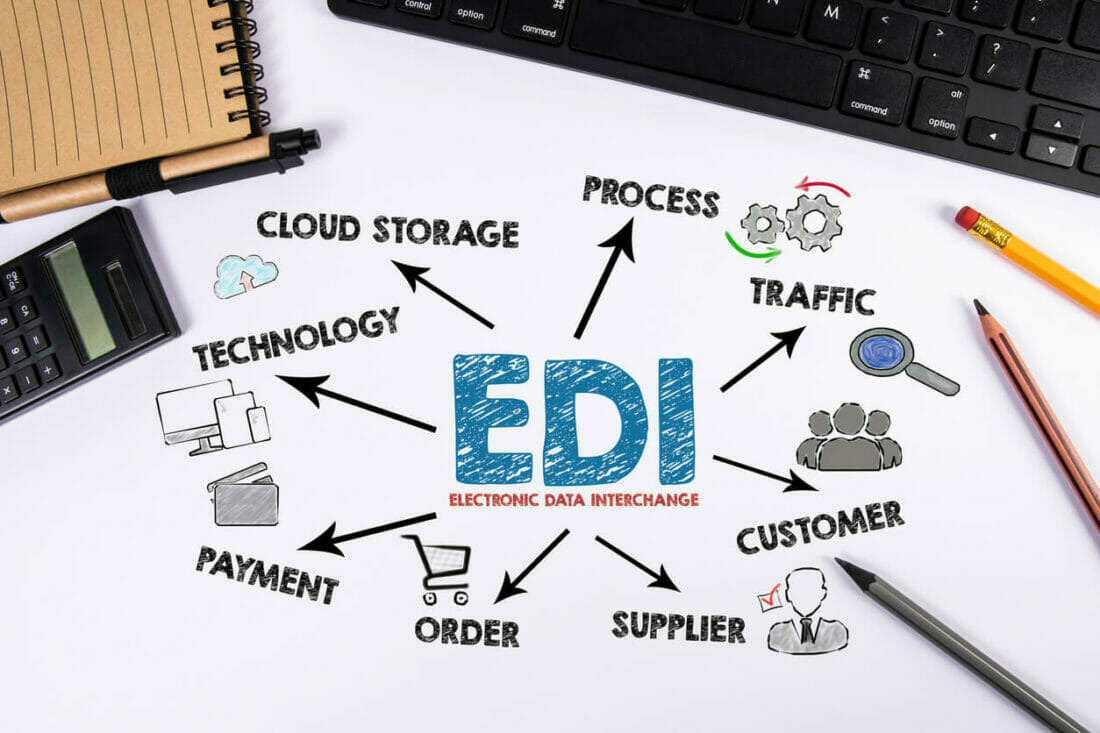Electronic Data Interchange: what is an EDI system?
No more paper, technology is advancing even in the business sector: thanks to EDI (electronic data interchange), communication between all actors in the supply chain becomes smoother and more innovative. If you need to digitize the exchange of invoices, delivery notes, orders and transport documents, EDI is a valuable ally for companies working in the shipping industry. But what is it, how does it work, and what benefits could it bring to your business? Read on and we will provide you with all the relevant information.
What does electronic data interchange mean?
EDI -an acronym for Electronic Data Interchange– is an electronic system that enables the exchange of standardized data, automating inter-company communication processes. Indeed, in an increasingly digital world, commerce not only has to digitize buying and selling activities, but also make all related activities, such as the exchange of information and documents, more efficient. And in this context EDI is becoming increasingly established.
Thanks to this technology, small and large companies can share with customers and/or suppliers, in an immediate and dematerialized way, a wide range of information including:
- Purchase orders
- Invoices
- Bills
- Transport documents
- Payment confirmations
- Inventories
- Requests for quotations.
Here EDI takes on a key role within the supply chain, making communication faster, safer and up to date with the digitization of the industry.
How does EDI work?
Today, many companies use EDI to exchange business documents. But how does this process work? First, there are two types of EDI transmission:
- Point-to-point, i.e. via an Internet connection between two computers or systems;
- Value-added network (VAN), which involves the use of a third-party network that handles the data transmission.
Underlying both these modes of interchange are EDI standards, common languages for the creation of electronic documents that can be elaborated by the computer systems of any trading partner. Let us see in detail what these are.
What are EDI standards?
EDI standards define the rules for sending and interpreting various business transactions, such as the order in which information is to be presented and the mandatory data to be entered. It is therefore the standardized language that must be used to generate the documents to be exchanged between the parties involved.
There are different types of EDI standards, from the most generic and widespread to more specific ones, used for particular companies. Among the most common ones are:
- ANSI ASC X12, widespread in Canada and the USA;
- ODETTE, mainly used in Europe for the automotive sector;
- TRADACOMS, predominant in English distribution;
- UBL, the standard used by European PAs.
The benefits of electronic data interchange
EDI is a valuable ally in business management, as automating the exchange of documents brings a wide range of benefits to companies:
- High time savings;
- Reduction of management costs by up to 90 per cent;
- Reallocation of human resources to non-time-spending activities;
- Optimisation of commercial and administrative departments;
- Reduction of errors and increased security;
- Real-time alignment of the business situation between partners.
The use of EDI is becoming increasingly widespread, especially by companies that develop many regular transactions with several trading partners. This is why we at C.T.I. International Forwarder have also adopted this technology, so that we are always up to date with the technological innovations related to our sector.



No Comments